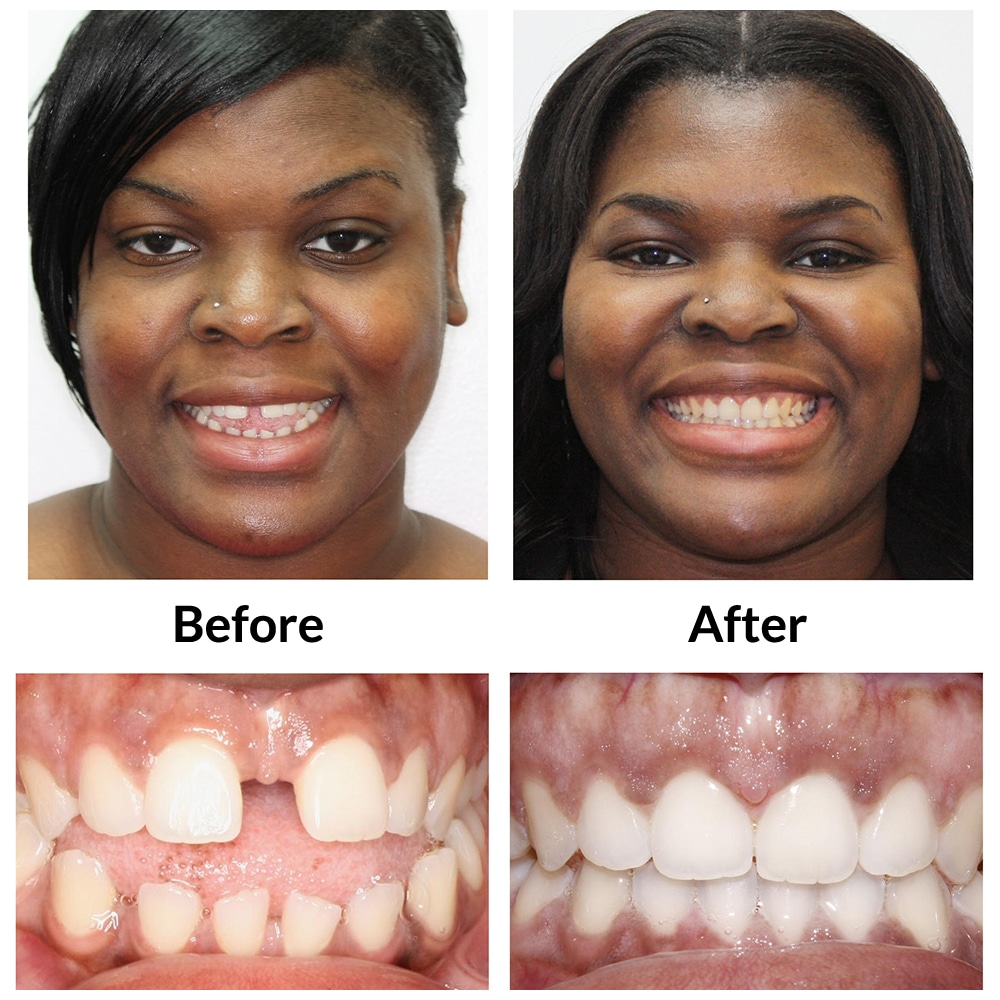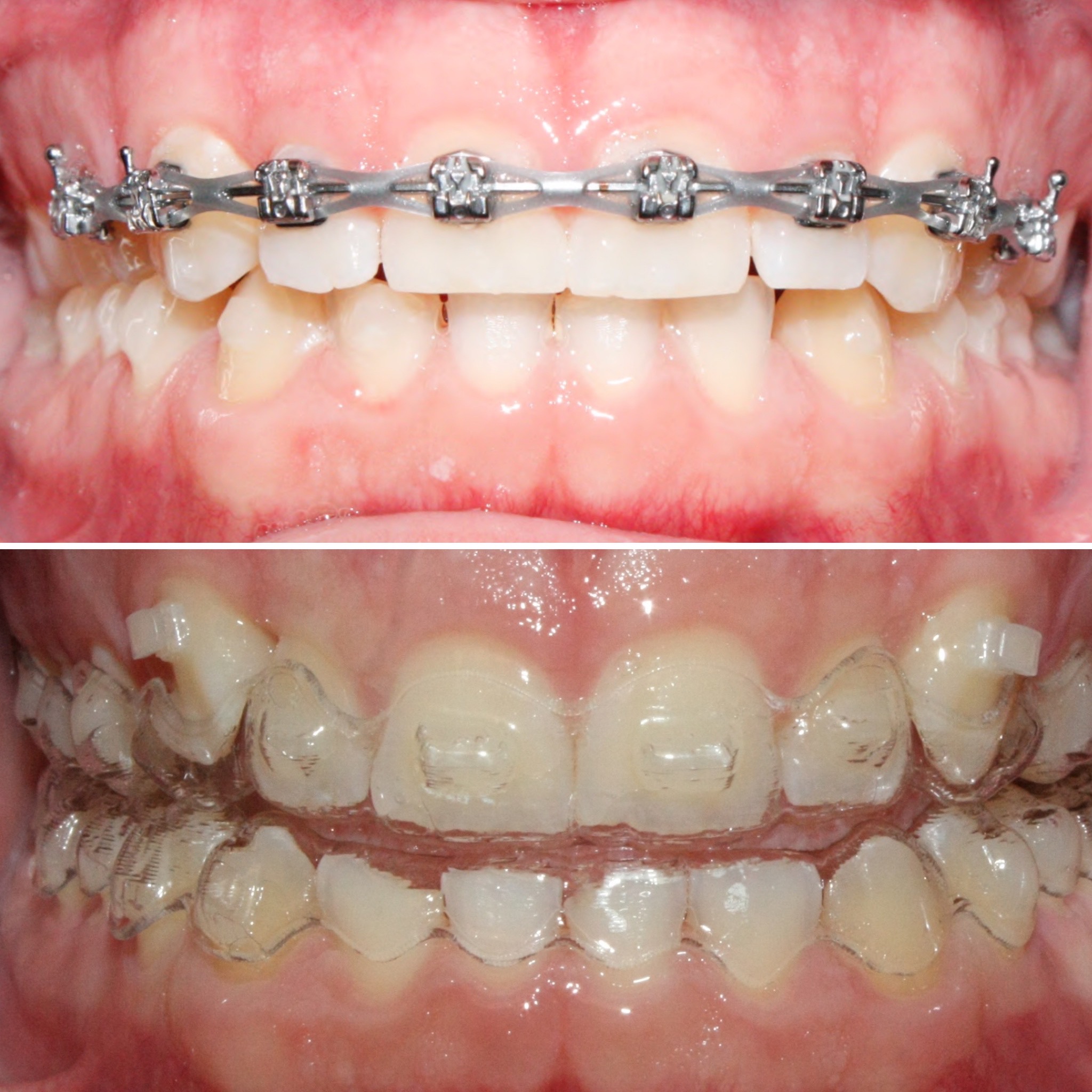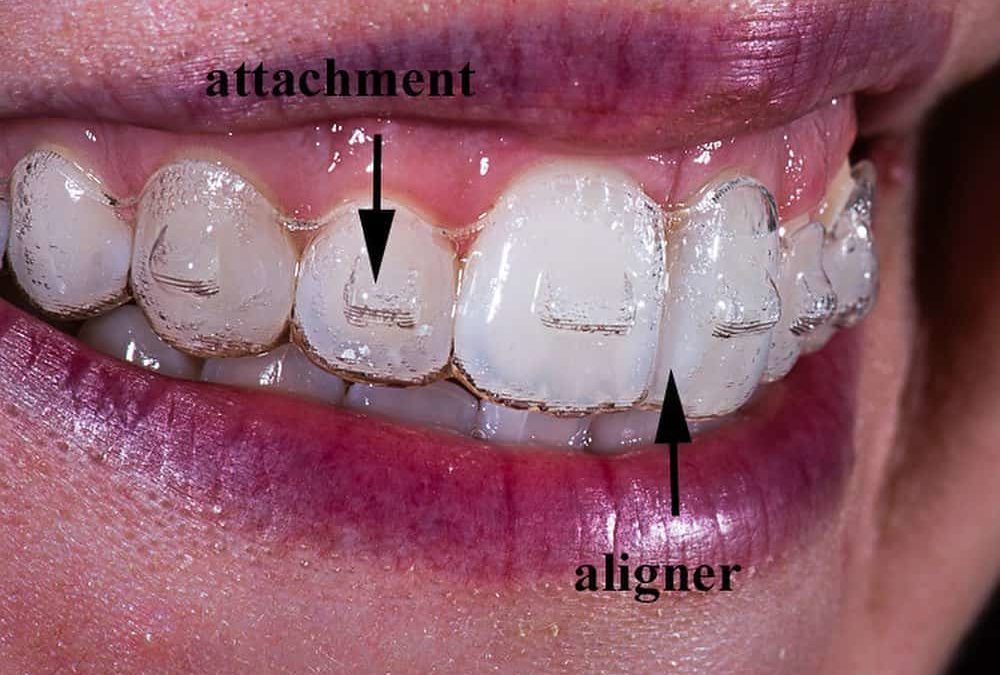How Invisalign Functions: Your Guide to Clear Aligners and Their Effectiveness
How Invisalign Functions: Your Guide to Clear Aligners and Their Effectiveness
Blog Article
Invisalign vs. Standard Dental braces: Which Choice Is Right for You?
When thinking about orthodontic treatment, the option between Invisalign and traditional dental braces presents several important elements that merit cautious evaluation. Invisalign supplies a discreet alternative with removable aligners, while conventional dental braces supply an extra noticeable yet effective remedy for serious imbalance.
Overview of Therapy Options

In comparison, traditional braces include metal brackets and cables that are adhered to the teeth. This method uses continual pressure gradually to attain alignment. While efficient for intricate orthodontic concerns, conventional braces call for normal check outs for changes and can pose difficulties in preserving dental health due to the difficulty of cleaning up about braces and cords.
Both alternatives have their merits, and the option commonly depends upon details dental conditions, lifestyle preferences, and client compliance. Eventually, getting in touch with an orthodontic professional is essential for figuring out one of the most appropriate therapy strategy tailored to private requirements. Comprehending the nuances of each choice can substantially influence the general success of orthodontic therapy.
Aesthetic Considerations
A significant factor affecting the selection in between Invisalign and traditional dental braces is the visual charm each treatment provides. Invisalign aligners are crafted from clear plastic, making them practically unnoticeable when put on. This very discreet appearance is particularly interesting adults and young adults who may really feel awkward regarding their orthodontic treatment. The ability to maintain an all-natural smile throughout the positioning process can significantly boost the individual's confidence in specialist and social setups.
In comparison, conventional dental braces include steel brackets and cords, which can be extra obvious. While advancements in orthodontic modern technology have brought about the advancement of smaller sized brackets and tinted elastics, traditional dental braces still maintain an even more obvious profile. For some people, the visibility of dental braces might discourage them from looking for required therapy.
Ultimately, the option in between Invisalign and conventional dental braces might hinge on individual choices pertaining to appearances. Clients that focus on discretion commonly lean toward Invisalign, while those who are much less worried about exposure might choose traditional braces. Recognizing the visual implications of each choice is critical for making an informed decision that lines up with one's way of living and choices.
Comfort and Convenience

In terms of benefit, Invisalign aligners are removable, making it possible for people to appreciate their favorite foods without restriction and keep ideal oral health. Cleaning and flossing are simplified, as the aligners can be taken out throughout these routines, whereas traditional dental braces need careful steering around brackets and wires.
In contrast, standard dental braces require normal adjustments, making them much less hassle-free for those with hectic timetables. In general, the convenience and convenience of Invisalign make it an attractive selection for many people their explanation looking for orthodontic treatment.
Treatment Period and Performance
While both Invisalign and conventional dental braces work in fixing oral imbalances, the period of treatment can vary substantially in between both options. Normally, Invisalign therapy can take anywhere from 12 to 18 months, depending on the complexity of the situation. The clear aligners function by progressively changing teeth right into their desired positions, and routine follow-ups with an orthodontist assistance make certain progression remains on track.
On the other hand, conventional dental braces usually call for a longer dedication, normally varying from 18 months to 3 years. This results from their set nature and making use of cords and braces, which can be extra reliable for intricate instances and extreme imbalances (Invisalign). The therapy efficiency of standard braces is well-documented, as they enable accurate modifications and greater control over tooth movement
Ultimately, the choice in between Invisalign and typical dental braces may depend upon both the anticipated therapy period and the certain dental issues at hand. Consulting with an orthodontist is crucial, as they can provide customized suggestions based on specific demands, making sure the selected method straightens with wanted results and timeframes.
Expense Comparison and Insurance Policy Alternatives
Expense plays a significant duty in the decision-making process for individuals taking into consideration orthodontic treatment, whether choosing Invisalign or typical braces. On average, the price of Invisalign ranges from $3,000 to $8,000, while traditional dental braces generally set you back between $2,000 and $6,000. Factors affecting these costs consist of the complexity of the instance, the duration of therapy, and geographical place.
Lots of oral insurance strategies give partial coverage for orthodontic treatments, however the specifics can differ widely. Typically, standard dental braces might be more often covered by insurance policy strategies contrasted to Invisalign, which some insurance providers categorize as an aesthetic treatment.
In addition, several orthodontic practices provide versatile settlement strategies, making both treatment options a lot more available. People ought to ask about prospective financing options and price cuts for ahead of time repayments. Examining the complete price, consisting of insurance policy advantages and layaway plan, is crucial for making an informed choice that straightens with both visual choices and spending plan factors to consider.

Final Thought
In summary, the choice between Invisalign and Read Full Report conventional braces depends upon numerous variables, consisting of visual choices, comfort, treatment duration, and price. Invisalign supplies a very discreet, detachable choice that assists in oral hygiene and nutritional adaptability, while standard dental braces may be more suitable for intricate oral problems and frequently come at a reduced cost point. Ultimately, appointment with an orthodontist is vital to examine private situations and determine one of the most proper treatment alternative for accomplishing optimal oral placement.
When taking into consideration orthodontic treatment, the choice in between Invisalign and conventional dental braces offers several vital elements that merit cautious assessment.Contrasting Invisalign and explanation conventional dental braces exposes distinct therapy options for orthodontic modification.While both Invisalign and conventional dental braces are effective in dealing with dental imbalances, the duration of therapy can vary substantially between the two alternatives.Expense plays a substantial role in the decision-making procedure for individuals thinking about orthodontic therapy, whether choosing for Invisalign or typical braces.In summary, the selection between Invisalign and standard dental braces hinges on several factors, including visual choices, comfort, treatment period, and price.
Report this page